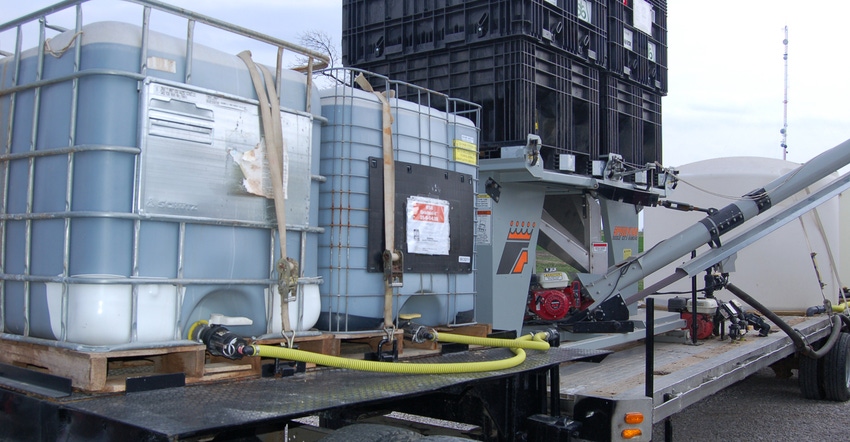
Can you recite requirements regarding diking for fertilizer and pesticide storage in Indiana from memory? Likely not, and no one says you should. However, it pays to refresh yourself. The rules haven’t changed recently, but if your farm operation has changed, you may need to make sure you’re still in compliance.
Some folks say they don’t care if they comply or not because they likely will never be checked. Others prefer to stay as far away from the Office of Indiana State Chemist as possible. It’s the regulatory agency responsible for enforcing regulations regarding pesticide and fertilizer storage.
If that’s your attitude, just know OISC makes random visits. “We were in the office chatting when there was a knock at the door,” one farmer reported recently. “It was an inspector from OISC, making unannounced, routine inspections. We didn’t have anything to hide and it was an amicable visit, but yes, routine inspections happen.”
Reverse psychology
Matt Pearson of OISC is responsible for making sure regulations are followed. “It only makes sense to do so, and there are actually several benefits,” he says. For one, if you build an approved diking facility, you can obtain a property tax credit. Contact OISC for information.
“Some people think that if they stay clear of OISC, we won’t be as likely to visit,” Pearson says. “Sometimes it works in reverse. If I’m doing inspections and pass a farm where I know I visited three years ago, but see one up ahead I’ve never been to, I’m more likely to stop where I’ve never visited before.”
Simple rules
Here are some of the basic requirements about diking and storage.
When dikes are needed. If you have one liquid fertilizer tank greater than 2,500 gallons of capacity or a total of 7,500 gallons or more at one site, you need a dike.
Dike capacity. Secondary containment is required to hold at least the volume of the single-largest tank plus the displacement of additional tanks and other items in the diked area such as pipes and pumps. It must also have 6 additional inches of wall height to allow for rainfall. If it’s protected from rain, the extra 6 inches isn’t required.
Drains and plumbing. No drains are allowed in the dikes. Plumbing must also be constructed, so pipes go over the wall, not through the wall.
Dry fertilizer. Rules for storing dry fertilizer kick in if you store 12 tons or more in one location.
Pesticides and dikes. If you have permanent storage for anything larger than 55 gallons, you need a dike.
Mini-bulk pesticide storage. If you have mini-bulks with capacities between 55 and 400 gallons and store them for more than 30 days, it’s considered bulk pesticide storage.
Loading pads. The minimum size is 10 by 20 feet, with 750 gallons of storage capacity required.
Miscellaneous. Make sure liquid fertilizer storage tanks are locked. Keep fertilizer, pesticides and fuel separated. Store only fertilizer in a fertilizer dike, pesticides in a pesticide dike and fuel in a fuel dike.
About the Author(s)
You May Also Like




